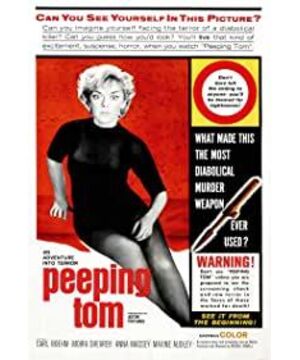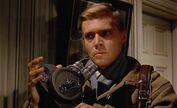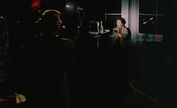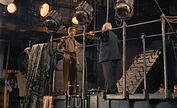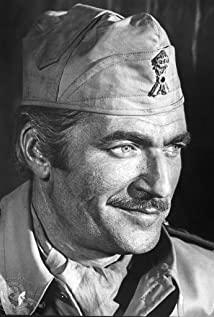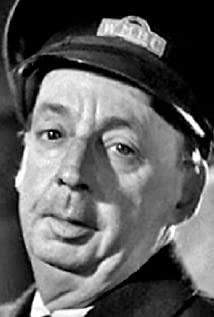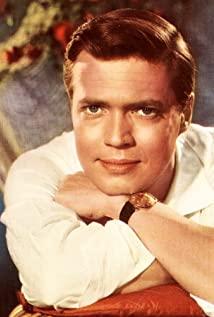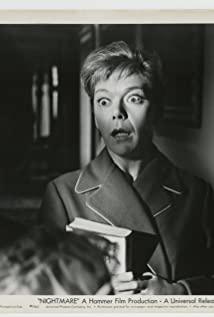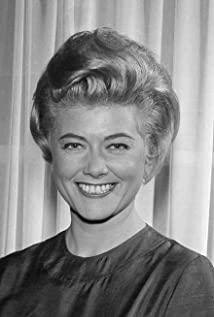Mike Powell's "Pepping Tom" is a really good movie, no wonder Scorsese is so respected, and the Top Ten of British film history often picks it up. In terms of consciousness and technique, this film is very avant-garde, and it is a symbolic classic that classic film theory is willing to explain. Movies that explore psychology always like to choose a perverted sample. According to the Freudian doctrine, the favorite of film writers, the influence of childhood is of course the most important part. So "Voyeur" has such a typical protagonist, who has been the subject of his father's psychological experiment since he was a child. When he became an adult, he re-projected his childhood fear memories on women. The murder weapon is a Vertov-style metaphor of the camera. You can try Powell's thinking on the meaning of images. Perverted voyeur Mark sees movies as memories of fear, and his shots are destined to only capture terrifying faces and make the things they photograph disappear (clear the fear). The director's shot is also filming, filming the poor psychopath, making Mark both an abuser and a victim. It is impossible to say whose lens is more cruel and ruthless. The technique of the film is quite awesome, and the changing camera angles are very unique. The opening eye is a keynote, and it's not known whose eye belongs to the director, Mark, or another bystander. Eyes are peeping, peeping at things in the movie, or the world outside the camera. Through the framing of Mark's camera, the lens replaces Mark's subjective vision, magnifying what Mark sees, that is, what he shoots. The frightened face of the woman that appears in the frame many times is Mark's record, experiment, and a means of revenge (imitation) for his father's behavior. The two sides of the frame are also a strange face, which is not only the incomparable fear of the victim before his death, but also Mark's intoxicated orgasmic look when shooting, connecting a distorted emotion through the camera. The content in the lens should be calm and objective, but both the photographer and the subject are expressing a kind of fear, making the real image paradoxically become an exaggerated emotion.
The film uses a lot of visual means to express emotions. For example, when Mark showed a murder movie, part of the projected image was reflected behind him, and the lack of reflection distorted the image, showing a mysterious and terrifying head like the scream of the dead soul. After the movie was shown, the reflection of the white screen formed a black shadow circle around the characters. In addition, in the scene where the truth was finally revealed, Helen's concave mirror in front of the camera reflected a terrified and strange face. The entire concave mirror seemed to replace Mark's head, reflecting his psychological state, which was equally ferocious.
The theme is voyeurism, and naturally, voyeuristic lenses are indispensable, and the line of sight always emerges from the rear end of the obstacle. Mark's camera is the main means of peeping, and he often appears in hidden places, behind the window, in the crack of the door, on the ceiling, spying on other people's activities from various angles, and the camera can also record the entire scene in some strange locations. state of affairs. Through prying, a multi-layered observation angle is formed. In a set of shots of the library, Helen first appeared in the close-up, as if someone was peeping, then the camera panned out, and Mark was peeping at her in the distant building, and then the camera pulled towards the room. Nearly, there is a detective behind Mark monitoring his activities. The change of perspective reflects the multi-layered voyeurism, expressing the theme from different observation angles, everyone can be a voyeur, and everyone has the psychology of peeping into privacy. Similarly, a scene with an actress shooting a dance is reminiscent of the scene at the beginning of "Zoom". Mark quietly arranged the murder scene on the side. After each shot is moved, it will be given meaning and become a double scene. schedule.
The use of light is also very clever. Although it is a color film, it is good at using the contrast of light and dark like a film noir. In many darkroom scenes, the lens adopts an expressionist lighting technique, interspersed with characters in alternating light and dark, creating a very unique atmosphere. In the scene where Mark invited Helen to watch the film for the first time, the red and blue light divided the interior into two groups of spaces along the diagonal. The lighting gives the picture more space and adds meaning to the expression. There are some commonalities in the feeling of British movie pictures. As for the themes of the film, the joyous passion and the cold cruelty also form a strong contrast. Looking at Powell and Hitchcock, sometimes I can't help but think of Imamura Shohei and Suzuki Kiyoshun. Many elements echo Japanese movies, which may be the characteristics of island culture.
View more about Peeping Tom reviews


